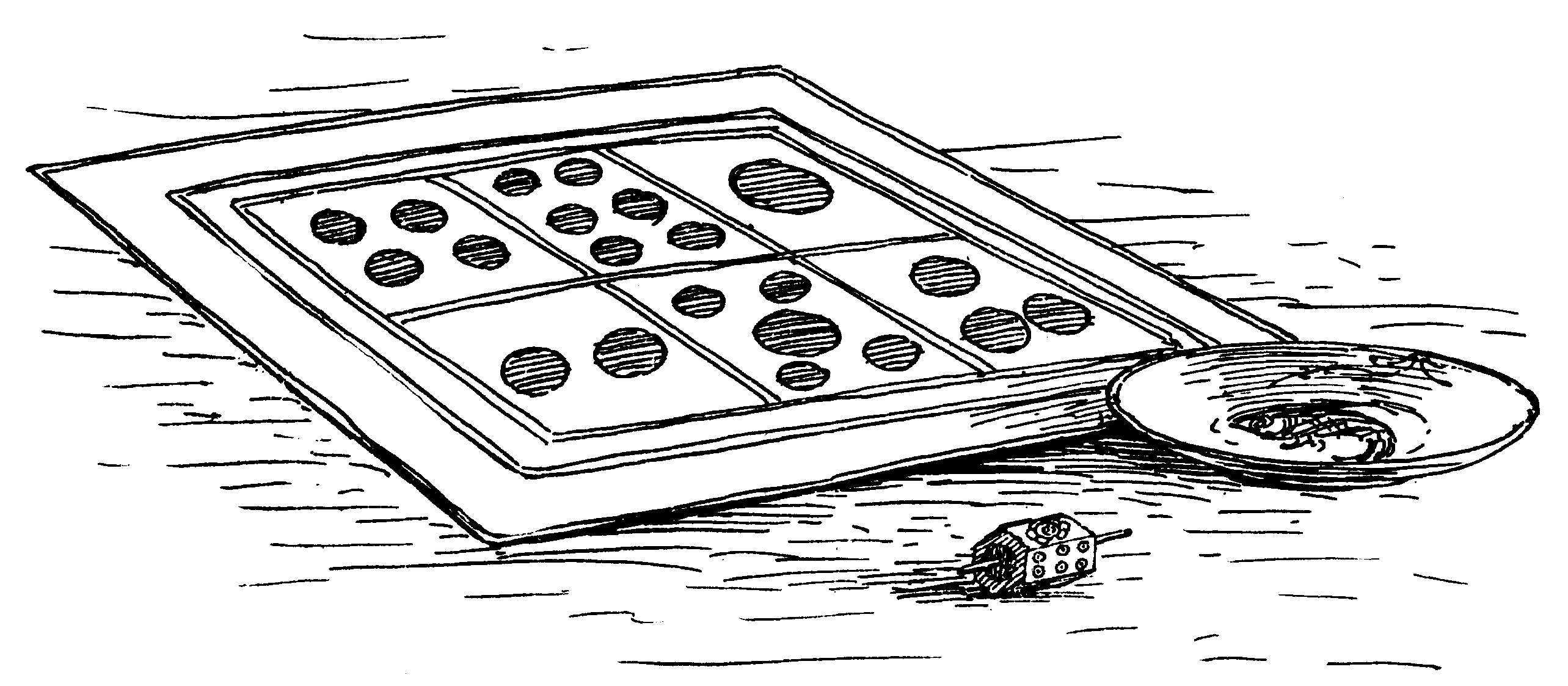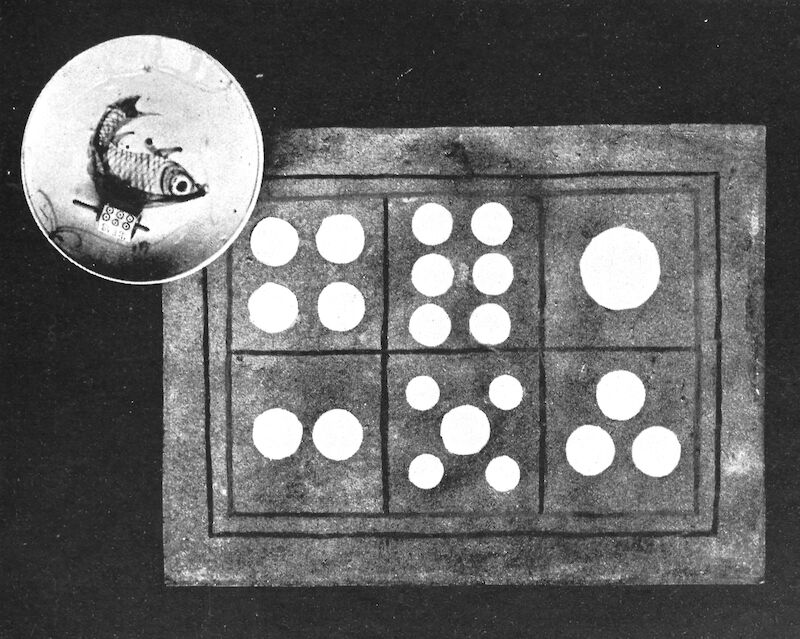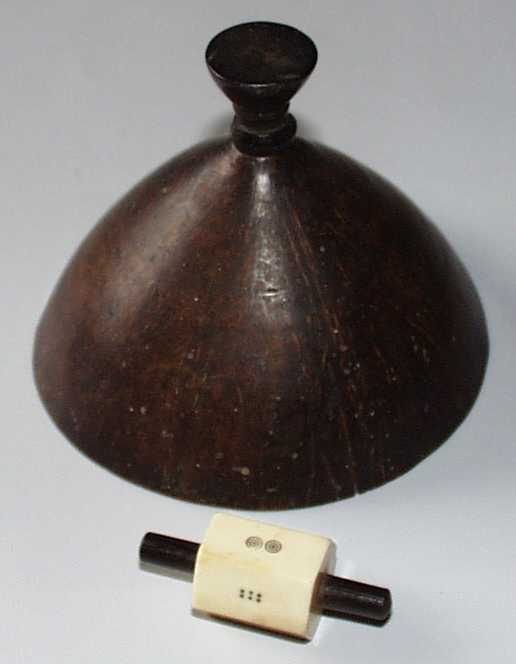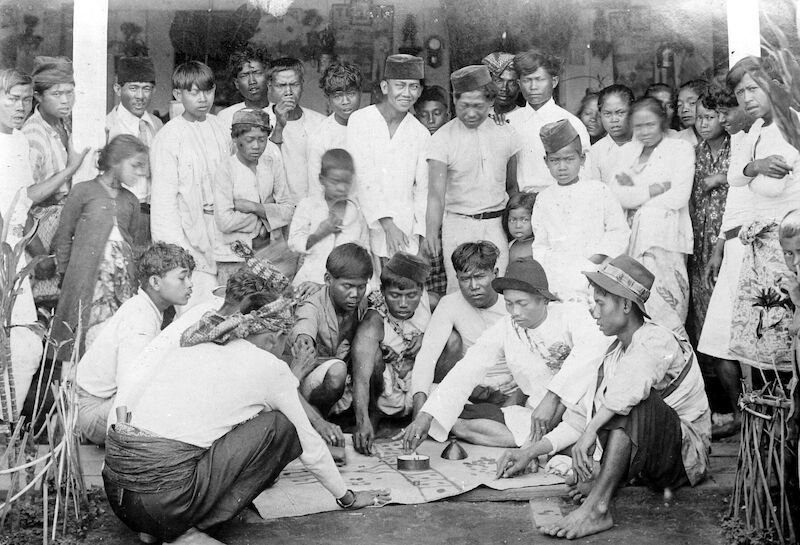Prinola
Last updated: .
Prinola is a simple staking game that used to be played in the Philippines. The name is derived from the Spanish pirinola, a spinning-top or teetotum.
The only source I have found for the game is that of Stewart Culin. He also states that the same game is played in China under the name 車咩 (‘teetotum’, Cantonese: ce¹ me¹).A (p. 496)Transliterated as ch’é mé in the original work.
Equipment

Implements for Prinola, from Culin (1900, p. 646).
Prinola is played using a staking layout containing symbols for the dice results through
, and a six-sided teetotum. The teetotum is usually spun in a shallow dish.
Alternately, the teetotum can also be decorated with animals or other images, in much the same way as the Chinese versions of Crown & Anchor.

A photograph of implements for Prinola, from Chinese Games with Dice and Dominoes (pl. 2).
Play
Players place their stakes on any of the partitions on the layout. The banker then spins the teetotum. Any players who selected the square that the teetotum shows win 4× their stake. All other stakes are lost.
Dadu Putar

Equipment for Dadu Putar.
© Arjan Verweij, used with permission
In Indonesia the game has been called Dadu Putar (‘spinning die’), and was popular amongst Javanese labourers and miners.C (p. 330) The top would be covered with a coconut shell or specially-made wooden cover whilst it was spinning. Evidence found online shows that the game is still played in this manner today.

A group of people playing Dadu Putar (or a game very similar to it) in Bengkulu, Sumatra (1910–1930).
Chobo-Ichi
The Japanese game of Chobo-Ichi (樗蒲一) is the same but played with a single die instead of a teetotum. The name means something like “gamble on one outcome”.
In 1784 this game had become so popular that gambling sheds running the game lined the street for a whole ri (里) — nearly 4 km — from Asakusa to Senju in Tokyo.D
The players place their bets upon the staking layout, then the banker rolls the die. Any players who bet upon the side that comes up win, and are paid 4× their stake. All other players lose their bets.
References
Culin, Stewart (). Chinese Games with Dice and Dominoes. Government Printing Office: Washington.
Culin, Stewart (). ‘Philippine Games’. American Anthropologist (New Series) vol. 2 (4), : pages 643–656.
Kaudern, Walter (). Results of the Author’s Expedition to Celebes 1917–20 volume 4: ‘Games and Dances in Celebes’; Ethnographical Studies in Celebes.
Schreiber, Mark (). ‘A dicey history’ [archived]. The Japan Times, .